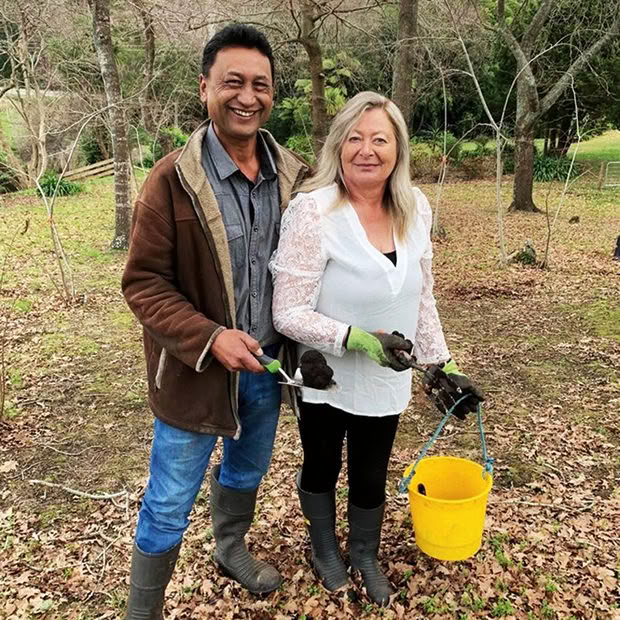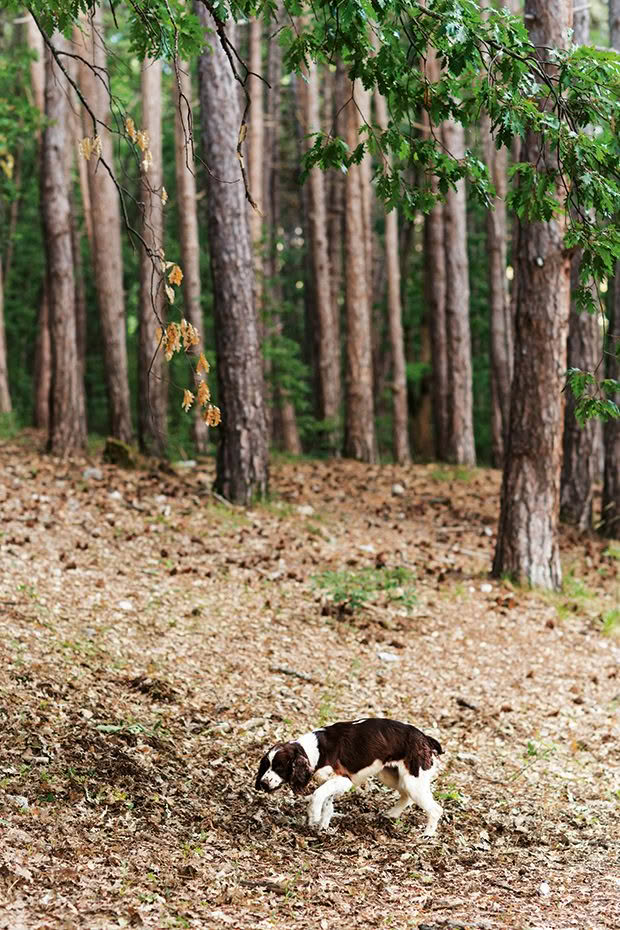Why truffles could be a lifestyle block goldmine

With truffles worth up to $3,500 per kilogram, they could be the perfect money-maker for block owners with unproductive land.
Words: Michael Andrew
The owners of a Bay of Plenty truffière are encouraging block owners to turn their land to truffle-growing in order to take advantage of booming global demand and extraordinary prices.
Annette Munday and Matiu Hudson of Ohiwa Black Diamond Truffles are receiving more than $155,000 of government funding over three years to share their knowledge with interested growers so that New Zealand can produce enough truffles to enter the global market.

Annette Munday and Matiu Hudson of Ohiwa Black Diamond Truffles.
Annette says growers within the New Zealand truffle sector have historically been very reserved about sharing truffle-growing methods. As a result, there are too few players to produce enough volume to meet export demand. “If we don’t share the information, we don’t grow,” she says. “And that’s been New Zealand’s problem for years – we can’t grab that export market because we don’t produce enough.” She said there’s considerable overseas demand for “clean, green New Zealand truffles” and plenty of room for new growers to get involved.
The company has received funding through the Ministry of Primary Industries’ Sustainable Food and Fibre Futures fund, and has so far run three workshops.
Participants are shown how to grow truffles from seedlings inoculated with the mycelium of white truffles (Tuber borchii) and black truffles (Tuber melanosporum) – both some of the world’s most expensive edible fungi.
GROWING TRUFFLES

At their workshops, Annette and Matiu show interested growers how to prepare their land for truffle growing and the ongoing maintenance needed to develop a harvest. Annette says truffles require very little land in order to produce a substantial yield. Up to 400 seedlings can be planted for every hectare of land, and each seedling can produce a kilogram of truffles.
“That doesn’t mean you need to plant 400,” she says. “You can plant 100, or you can plant 50. Our little block in Ohiwa has only 22 trees and that can produce up to 22 kilograms.”
Ohiwa Black Diamond Truffles supplies one-year-old certified inoculated seedlings, which they developed through their MPI funding. The seeds of oak and hazelnut are inoculated with the black truffle spore, and the seeds of stone pine (Pinus pinea) with white truffle spore. This allows the truffles to grow amongst the root system as the tree matures and the first fruiting bodies can be harvested anytime between four and ten years after planting the trees.
Annette says truffles grow best in a sandy loam (no more than 30% clay) with a high pH of between 7.6 to 8.3. “It’s just using land that can’t be used for proper grazing. You don’t want the land to be too steep because then it becomes hard work when you’re lifting your truffles and doing maintenance around the trees.”
Start-up costs on a per-hectare basis range from $26,000 to $70,000, with the higher end driven by requirements such as water bore installation or fencing.
If they just need to put it in simple irrigation, then they’re looking at around $5,000 for the setup. But if they’ve already got water and fencing in place then all they’re doing is paying for the seedlings and a bit of the time to prepare the soil.”
VALUE-ADDED PRODUCTS

Annette says New Zealand produces a very small volume of truffles – under 500kg per year – and about 200kg of that is exported.
While raw truffles make up the vast majority of the truffle products sold, she says there’s enormous potential in “value-added products” – products that have been modified or enhanced to have a higher market value. “No one has dived into using truffles for value-added products, which is a real shame because 99% of the value-added truffle products on New Zealand shelves are imported, which makes it hard for us to get our products on the shelves.”
Annette says her company is using the Sustainable Food and Fibre Futures funding to develop value-added products like truffle oil and truffle salt, and it is working with Callaghan Innovation to develop a liquid truffle extract that can be used in face creams and other beauty products.
“It’s claimed that truffles have anti-ageing and antioxidant properties, so we’re looking to tap into that,” she said. “We’re also working with a New Zealand chef on a premium truffle paste.”
THE MARKET

Black truffles grow wild in European countries such as France, which accounts for around 45% of the world’s production. They are an extremely sought-after product in fine dining and high-end cuisine and are prized for their unique aroma and ability to refine the taste of certain dishes. “Some chefs like the black truffle, some chefs like the white truffle. But the black seems to be slightly more valuable.”
Annette believes the reticent nature of New Zealand truffle growers was brought over from France, where wild-grown truffle hot spots are kept secret to prevent anyone else discovering them.

“I think that’s where the problem started. In France, it’s all kept top secret, it’s like a hunting spot – you don’t tell people your hunting spots. And that attitude has been brought back here. But we do things differently. We farm them. And we don’t have to keep it a secret anymore.
Love this story? Subscribe now!
 This article first appeared in NZ Lifestyle Block Magazine.
This article first appeared in NZ Lifestyle Block Magazine.
